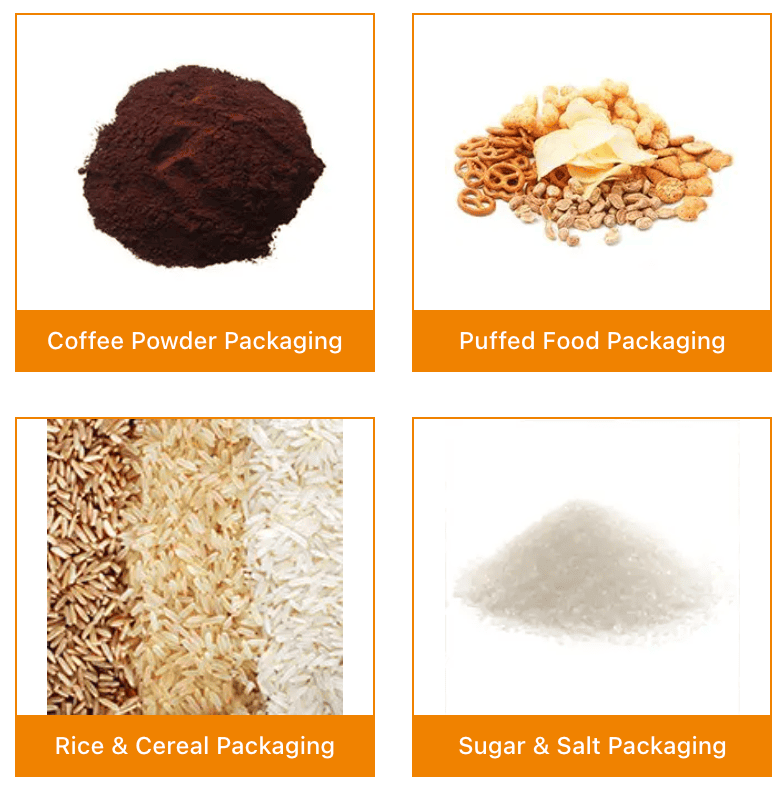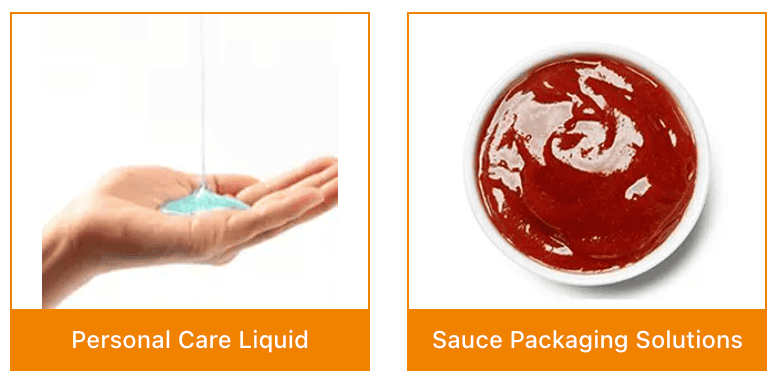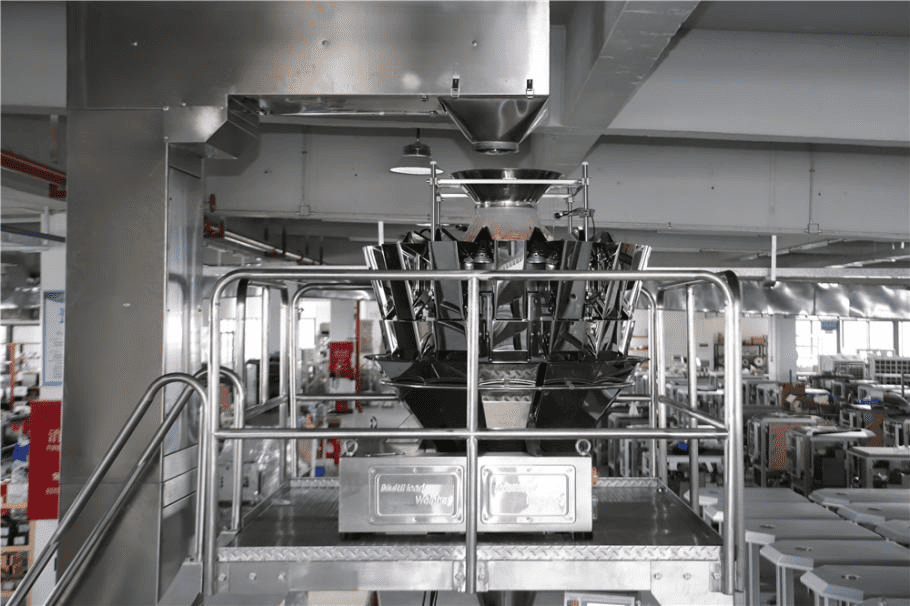How to Choose a VFFS Machine: Complete Selection Process for Food Industry Professionals
Packaging Knowledge Hub

If you're seeking packaging automation solutions, please contact us, and we'll be delighted to offer you the most tailored solution.
The global food packaging machinery market is experiencing unprecedented growth, with Vertical Form Fill Seal (VFFS) machines becoming the cornerstone of modern food production lines. For packaging machinery distributors, dealers, and food processing facilities, selecting the right VFFS packaging equipment has a direct impact on operational efficiency, product quality, and bottom-line profitability.

This comprehensive guide provides food industry professionals with a systematic framework for VFFS machine selection, ensuring optimal equipment choices that drive competitive advantage and operational excellence.
Understanding VFFS Machine Product Compatibility Requirements
Food Product Classification and Machine Matching
1.Dry Food Products and VFFS Configuration
Granular products like snacks, cereals, and nuts require specific machine configurations for optimal performance. Uniform particle sizes (3-15mm) work best with multihead weighers, achieving ±0.5g accuracy at speeds up to 120 bags/minute. Mixed particle products need combination weighers with larger hoppers to prevent segregation.
Powder products including spices, flour, and protein supplements demand auger filling systems designed for bulk density variations. Free-flowing powders (bulk density >0.6 g/cm³) enable high-speed operations at 20-60 bags/minute, while challenging powders require specialized anti-bridging mechanisms.

2.Liquid and Semi-Liquid Food Applications
Liquid and Paste Products (Sauces, Condiments, Dairy): Packaging speeds for these products generally range from 20-100 bags/minute. The specific speed and configuration depend on the product's viscosity (measured in centipoise, cP), which directly dictates the required pump system:
Piston Pumps: Ideal for low-viscosity liquids (<500 cP).
Gear Pumps: Used for medium-viscosity products (500-5000 cP).
Progressive Cavity Pumps: Necessary for high-viscosity pastes (>5000 cP).

Food Safety and Material Compatibility Standards
Temperature-sensitive products like chocolate require sealing temperatures below 140°C with rapid cooling cycles. Frozen food packaging demands cold-sealing capabilities or modified atmosphere packaging integration.
Chemical compatibility assessment includes pH levels, oil content, and corrosive properties. Acidic products (pH <4.5) necessitate stainless steel 316L construction, while high-fat products require specialized non-stick surface treatments and enhanced cleaning systems.
VFFS Packaging Machine Production Capacity Planning Framework
Calculating Optimal Machine Speed Requirements
Production volume calculations must account for peak seasonal demands rather than average production levels. Calculate required hourly output by dividing daily targets by effective operating hours (typically 16-20 hours for multi-shift operations).
Speed Optimization Factors:
- Real-world operating speeds achieve 70-85% of rated capacity.
- Include 15-20% capacity buffer for maintenance and changeovers.
- Smaller bags (50-200g) enable higher speeds.
- Larger formats (500g+) reduce throughput due to filling time.
Multi-Product Line Efficiency Considerations
Changeover frequency analysis directly impacts overall equipment effectiveness (OEE). Quick-change capabilities reduce downtime from 45-60 minutes to 15-25 minutes per changeover, significantly improving daily productivity.
Document required changeovers per shift, including SKU variations, bag sizes, and material changes to accurately assess machine requirements and operational costs.
VFFS Packaging Film Material Selection Guide
Monolayer Film Applications for Food Packaging
Polypropylene (PP) Films: Excellent moisture resistance and rigidity, ideal for dry snack products
Cast Polypropylene (CPP): Superior heat-sealing performance with high transparency, commonly used as inner sealing layers
Polyethylene (PE): Cost-effective solution for basic food packaging applications
Ethylene-Vinyl Acetate (EVA): Outstanding flexibility and low-temperature sealing, perfect for frozen food products
Laminated Composite Films for Enhanced Protection
OPP/CPP Structures: Industry-standard combination providing glossy exterior with reliable heat-sealing capability, widely used for snacks, biscuits, and nuts
PET/PE Laminates: Premium option offering exceptional stiffness, puncture resistance, and transparency with reliable sealing properties
High-Barrier Films: PVDC-coated structures provide superior oxygen and moisture protection, extending shelf life for meat products and prepared foods
VFFS Machine Technical Specifications and Configuration
Filling System Selection Matrix for Food Applications
Multihead Weigher Configurations:
- 10-head systems: Entry-level accuracy for basic applications
- 14-head systems: Balanced performance for most food products
- 20-head systems: Maximum accuracy for premium products
Target accuracy ranges from ±0.1g to ±0.5g, depending on head count and product characteristics.

Volumetric Filling Systems: Cost-effective solution for consistent-density products like grains and cereals, achieving 30-120 bags/minute with ±1-2% accuracy
Specialized Filling Options:
- Auger systems for powders: 20-60 bags/minute capacity
- Liquid pump configurations: Customized for viscosity requirements
- Combination systems: Multi-product flexibility

Sealing Technology and Temperature Control
Modern VFFS machines feature advanced sealing technologies, including:
- Constant heat sealing for consistent film types
- Impulse sealing for heat-sensitive materials
- Ultrasonic sealing for specialized applications
Temperature control accuracy (±2°C) ensures optimal seal integrity across varying film materials and environmental conditions.
Food Industry VFFS Selection Process Workflow
Phase 1: Requirements Assessment (Week 1-2)
Document comprehensive product specifications, including physical properties, chemical characteristics, and regulatory requirements. Establish production targets, quality standards, and budget parameters with clear mandatory versus preferred features.
Phase 2: Vendor Evaluation and Market Research (Week 3-4)
Research manufacturers with proven food industry track records. Evaluate technical support capabilities, spare parts availability, and local service presence. Request detailed proposals from 3-5 qualified suppliers focusing on food safety compliance and regulatory certifications.
Phase 3: Testing and Performance Validation (Week 5-8)
Conduct comprehensive machine demonstrations using actual food products. Evaluate cleaning procedures, changeover efficiency, and maintenance requirements. Request performance data, including speed, accuracy, reliability metrics, and food safety compliance documentation.
Phase 4: Commercial Analysis and Contract Negotiation (Week 9-10)
Compare the total cost of ownership across vendors, including energy consumption, maintenance costs, and operator training requirements. Negotiate warranty terms, service agreements, and performance guarantees specific to food industry applications.
Phase 5: Implementation and Commissioning (Week 11-16)
Develop installation schedules coordinating facility modifications, utility connections, and comprehensive staff training programs. Establish commissioning protocols including food safety validation, performance verification, and regulatory compliance documentation.
Critical Success Factors for Food Industry VFFS Implementation
Cross-Functional Team Engagement: Include production, maintenance, quality assurance, and regulatory compliance personnel throughout the selection process.
Regulatory Compliance Planning: Ensure selected equipment meets FDA, USDA, and local food safety regulations with appropriate documentation and certification.
Training and Support Infrastructure: Establish comprehensive operator training programs covering food safety protocols, cleaning procedures, and troubleshooting techniques.
Continuous Improvement Framework: Implement monitoring systems tracking equipment performance, product quality, and regulatory compliance for ongoing optimization.
You've already mastered a systematic approach to selecting the optimal VFFS packaging machine. Now, let our expert team translate that knowledge into a tailored solution for you. Schedule a free, no-obligation production line assessment today, and we'll provide a detailed equipment configuration proposal based on your specific products, capacity targets, and budget, helping you make the most informed investment decisions.
FAQ
Q: How do I determine the right VFFS machine speed for my food production requirements?
A: Calculate hourly output needs based on daily targets divided by operating hours, then add a 15-20% buffer for maintenance. Size machines at 110-125% of calculated requirements.
Q: What's the difference between multihead weighers and volumetric filling for food products?
A: Multihead weighers provide ±0.1-0.5g accuracy, ideal for variable-density foods like snacks. Volumetric systems offer cost-effective ±1-2% accuracy for consistent products like grains.
Q: Which technical specifications matter most when comparing food packaging machines?
A: Prioritize filling accuracy, sealing capabilities, food-grade construction materials, cleaning accessibility, and integration with existing food safety systems.
Q: How do I ensure packaging film compatibility with my food products?
A: Test sealing performance with actual films at various settings. Consider barrier properties, material thickness (25-80 microns), and food safety certifications.
Q: What are the key factors for successful VFFS implementation in food facilities?
A: Focus on comprehensive training, detailed cleaning protocols, preventive maintenance schedules, quality control procedures, and regulatory compliance documentation.

